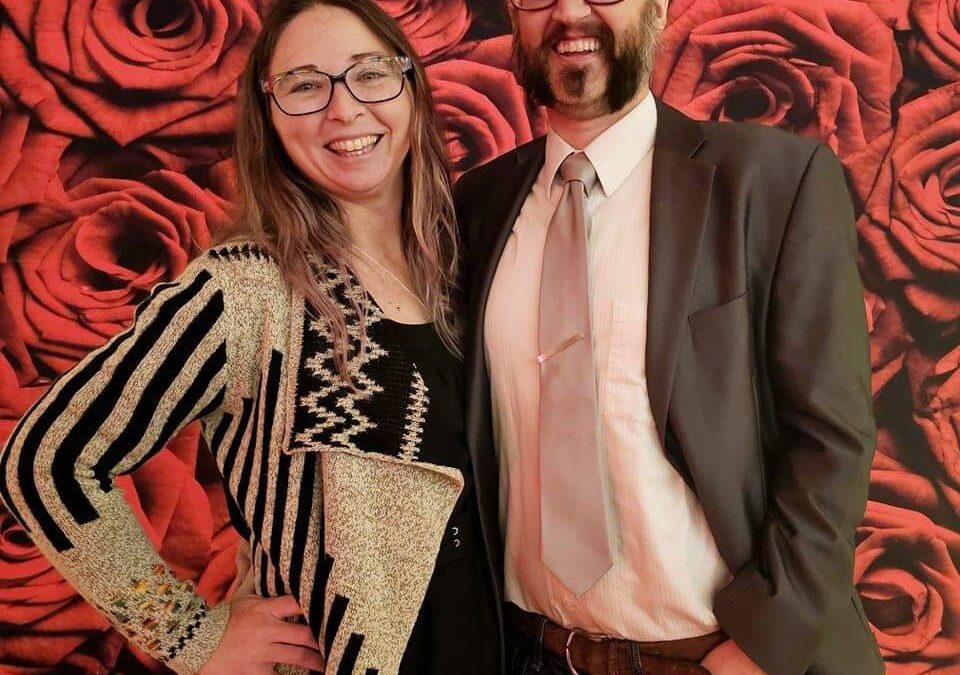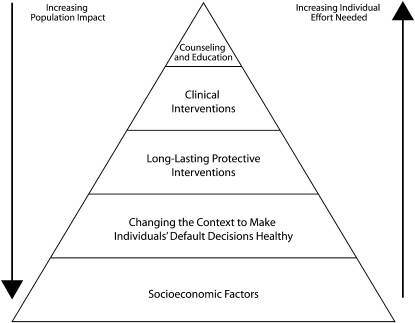
by Guest | Feb 28, 2024 | Being Well, Featured, Move Well
Greetings Everyone! My name is Stephen Mintie and I live in Tillamook with my wonderful wife. I’ve gotten to know a lot of people in the area in the short time I’ve been here which is partially due to my endeavors in amateur videography. This allows me to be a visual storyteller in how I share my life. People regularly get to see a rich personal life I’m very grateful for that includes paragliding, hiking, community involvement, dining with my wife, and various adventures. What they don’t know is that I’ve had some times in my life of deep despair that has translated to some heavy anxiety and depression that still impacts me to this day and it has affected my physical health as well.
We all face different circumstances and traumas. We all process information and are motivated differently. Our tolerances vary as well. With that said, here are some things that have helped me pull out of my moments of weakness and pain though it is still very much a work in progress.
Light exercise goes a long way! A job of a physical nature or hobbies can help. There was a time I didn’t have either. I elected to do some sit ups, push ups, and a light jog a few times a week. After about a month and a half, I was improving. The biggest benefit was that physical activity led to better mental strength. Exercise does not need to be about vanity, it only takes a little work consistently for your mind and body to reap the rewards. When the chips are down, you need all the cards you can get in your deck.
What you put into your body matters. For a long time I was eating a frozen pizza for dinner late at night while washing it down with copious amounts of beer. This absolutely set me back pretty hard. I started developing what felt like an allergy to what I thought was gluten which has since subsided as I’ve changed this habit. The way I went about this was I started eating healthy foods such as greens and vegetables during the day. I felt it was easier to do during my working hours when I wasn’t chasing food for comfort. In the evening, I learned how to take healthy ingredients, but make it into something that tasted satisfying. I was able to feed the habit, and the habit didn’t know it was good for me. – Alcohol doesn’t serve anybody when things are hard. It’s a depressant and after a drink or two, it’s essentially poison. Do I still drink? Yes. Would I benefit from abstaining altogether? Absolutely. I wasn’t going to stop though, but I was thoughtful about its impacts. I stopped buying hard liquor in stores and stuck with low ABV beer. These days I have a pretty set limit of how much I’ll drink, but I wouldn’t consider it to be within healthy ranges. Remember, if your mind is hurting, alcohol is your enemy. A few hours of feeling good is only borrowing a few hours of happiness that has to be repaid back times 4.
Focus on growth rather than goals. You can fail while growing and even if you hit goals, you still will want to continue growing. Growth means that you don’t stop trying. Growth also means pursuing things that fill your personal cup and provide you with more mental stamina and relief. This varies wildly from person to person. Comparing yourself to others hinders growth.
In a world filled with people who are healthy and sick, rich and poor, only your story matters because it’s your health and mental well being on the line. We should absolutely care and empathize with others, but you can help people a lot more if you are happy and healthy. Growth also doesn’t have to be solely related towards eating right and exercising. The happiest people out there are also the most gracious. Grow in gratitude, be kind, and help others. Life is full of pain and disappointment for many. Think of ways to put a smile on somebody’s face. If you feel rudderless without direction, sometimes all you can do is your best. If you can’t find the light, be the light!
Lastly and while this applies to everyone, I’m really speaking to the men out there. Don’t be afraid to say something if you’re hurting. Some of my best pals and I talk about it all the time. It makes us human and relatable. I’ve made more friends in my life being open, honest, oftentimes self deprecating rather than bragging or making it seem like everything is in order. At the end of the day you are not alone. Life is not meant to be lived in quiet desperation and nothing changes if nothing changes. Regardless of your self esteem, say to yourself “I want to feel good, I want to be ok, and I would like to be happy too.” After that, start thinking about little things you are capable of doing every day consistently that will help you head in that direction. The time of my life where I started doing these things was a time I did not have hope whatsoever. I couldn’t see the way out, but I knew if I didn’t try the basics, I was going to sink. While I am a very lucky man now, I often think, “wow, there were so many times I just wanted to give up, and if I had, I would have had none of this.”
Don’t ever give up and remember, there’s a trick to eating an elephant, you have to take small bites.

by Michelle | Jan 16, 2024 | Eat Well, Featured, Move Well, Work Well
Tillamook County Wellness was launched in 2016 as a “Year of Wellness” with a simple goal – to encourage people to make small changes to become healthier. After a successful kick-off year, the Wellness Advisory Committee decided to ride the wave of community support for this grassroots population health improvement initiative and set a ten-year goal to reduce the percentage of people in Tillamook County who were at risk for developing Type 2 Diabetes. This ambitious goal had one significant challenge. How would we track our efforts to determine if we were having an impact? We can’t measure what doesn’t happen. Or can we?
In 2016, the percentage of adults in Tillamook County living with a diagnosis of diabetes was 12%. In 2023, the same source for this data (County Health Rankings), reported Tillamook County rates at 8%. Another bright spot for comparison is that we began our journey with a health ranking in the bottom third of Oregon counties. Today we boast a #12 county health ranking status out of 35 ranked counties in the state. Anecdotally, we are making progress. More concretely, we have built more trusting relationships, established policies, programs and strengthened partnerships in ways that are making Tillamook County a healthier place to live, work, play, learn and age.
So, who is Tillamook County Wellness and what exactly are we doing to improve health and quality of life in Tillamook County? It’s all of us and it’s everything. This is what collective action looks like. It takes everyone thinking, working and living together intentionally in ways that promote health and well-being.
In 2023, 34 community and government organizations, businesses, schools, healthcare partners and many, many volunteers all worked together to move the dial on health. Grants were written and awarded for building a sustainable healthcare partner network, implementing a health literacy campaign and partnering to hold a bike rodeo where more than 30 bikes were given away to area families. Walking groups, led by volunteers, met weekly throughout the county. Hundreds of vegetable seeds were distributed so our local gardens can “Grow Well.” Free wellness classes were held in English & Spanish for everything from how to prevent and manage chronic diseases like type 2 diabetes to how to manage personal finances.
Upstream efforts to build more housing, increase the availability and affordability of childcare and expand education pathways for higher income-earning potential are just some examples of how partners are working to create the conditions for a healthier community. Changes to the built environment such as community walking paths, segments of the Salmonberry Trail and a bike pump track are other examples of work being done to make it easier for people to get and stay healthy. Area schools work with Food Roots to teach kids where their food comes from and how to cultivate and cook it. Nutritious recipes with easy-to-find, inexpensive ingredients are being shared and devoured based on the social media stats behind those shares.
The point here is that wellness is more than a number on the scale or a medical record. Wellness starts with people’s ability to have a safe place to live, healthy food to eat, an education that leads to a living wage job, a community that has adequate supports for mental health, addiction, and for families with loved ones experiencing disabilities or different abilities.
Often, when we think about the challenges that negatively impact community health, we wonder, “why isn’t someone doing something about this?” Working in community well-being for a decade, it is clear to me that much is being done and a lot of positive changes are resulting from those efforts. The organizations responsible for much of this work are often constrained by lack of funding, staff or volunteers. You can make a difference by making donations to your favorite charities, getting involved as a volunteer, and advocating for the good work within your family and peer circles. After all, giving back is good for your health.
Written By Michelle Jenck, M.Ed.,
To learn more, get involved and donate, visit www.tillamookcountywellness.org or email us at info@tillamookcountywellness.org.

by Michelle | Sep 18, 2020 | Move Well
Two-for-one sales are always popular. We get twice as much for the cost of one. What if we can get a three-for-one deal? Wouldn’t that be awesome? In healthcare, this is referred to as the “Triple Aim.” Developed by the Institute for Healthcare Improvement, this framework sets a goal of improving population health, as well as quality of individual care, while at the same time reducing healthcare costs.
It may sound too good to be true, but great strides are being made to accomplish the Triple Aim. This isn’t just a good idea. It is necessary, given escalating rates of preventable illness and healthcare costs. Because the factors that influence health extend beyond the healthcare system, other sectors must become part of the “Triple Aim” solution. Government, schools, businesses, faith-based and civic organizations are just some of the partners that can help.
The Centers for Disease Control and Prevention (CDC) has developed the Health Impact Pyramid, a resource that helps communities understand how to get the best return on investment when working to improve population health. Traditionally, most of the time and money invested in helping people get or stay healthy happened at the top of the pyramid in the form of counseling, education and clinical interventions. While these are important strategies, they require more individual effort and often do not fully address the underlying, root causes affecting individual health.
Research has shown that investments in factors that influence a person’s education, employment and housing status, known as socioeconomic factors, can achieve a much higher rate of return. For example, community investment in early childhood development and care impact a child’s success in school and this will likely lead to a better job down the road. Education and employment status are associated with better health in adulthood.
The second level of the pyramid relates to making default choices healthier where people live, work and play. If we live close to a store that sells fruits and vegetables, we tend to eat more of those foods than someone who must travel a long distance to purchase them. Similarly, conveniently located sidewalks, bike lanes and trails make being active easier. Research shows that people who live in walkable communities are more active and healthier.
Continuous, paved pathways provide safe, accessible opportunities for all citizens to become more physically active. Currently, there are few places like this in Tillamook County. Kilchis Point Reserve, near Bay City, is a popular trail. Another good example is Bud’s Fitness Trail at Tillamook Junior High School. These paths allow people of all abilities to enjoy being active outdoors and accommodate strollers, walkers and wheelchairs. These off-road paths, such as the planned Crosstown Connections rail spur between Goodspeed Park & Hoquarton Slough, allow families with small children to recreate safely, even allowing a young child to skate, ride a bicycle or scooter – all important activities for physical development and social connectivity.
These paths are free to the public and open year-round. The return on investment comes from the increased health and community livability these resources provide. Development of the proposed Salmonberry Rail Trail within our coastal communities stands to not only generate significant economic development but also positive community health benefits.
By visiting a local recreational area, you can check off a square on your Explore Your Outdoors BINGO card to enter to win a prize. Cards are available on-line at https://tillamookcountywellness.org/move-well/great-places-to-get-moving/ or can be picked up at NCRD, the Y and Inn at Cape Kiwanda. You won’t want to miss out – the adventure ends September 25th!
For more local health and wellness information, follow Tillamook County Wellness on Facebook, Instagram and Twitter.
Author: Michelle Jenck, TC Wellness Coordinator



